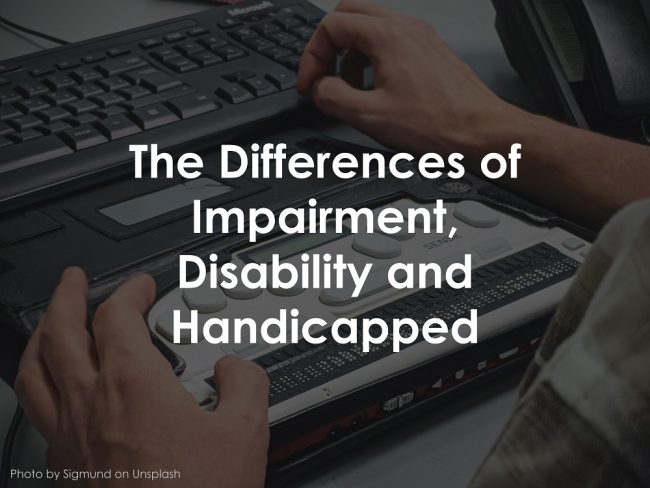A person with impairment not necessarily disabled. And a person with disability not necessarily handicapped. However, a person who is handicapped is having disability and impairment.
Impairment is the correct term to use to define a deviation from normal, such as not being able to make a muscle move or not being able to control an unwanted movement.
Disability is the term used to define a restriction in the ability to perform a normal activity of daily living which someone of the same age is able to perform. For example, a three-year-old child who is not able to walk has a disability because a normal three-year-old can walk independently.
A handicapped child or adult is one who, because of the disability, is unable to achieve the normal role in society commensurate with his age and socio-cultural milieu. As an example, a sixteen-year-old who is unable to prepare his own meal or care for his own toilet or hygiene needs is handicapped.
On the other hand, a sixteen-year-old who can walk only with the assistance of crutches but who attends a regular school and is fully independent in activities of daily living is disabled but not handicapped. All disabled people are impaired, and all handicapped people are disabled, but a person can be impaired and not necessarily be disabled, and a person can be disabled without being handicapped.
Source: “Cerebral Palsy: A Guide for Care“, University of Delaware

